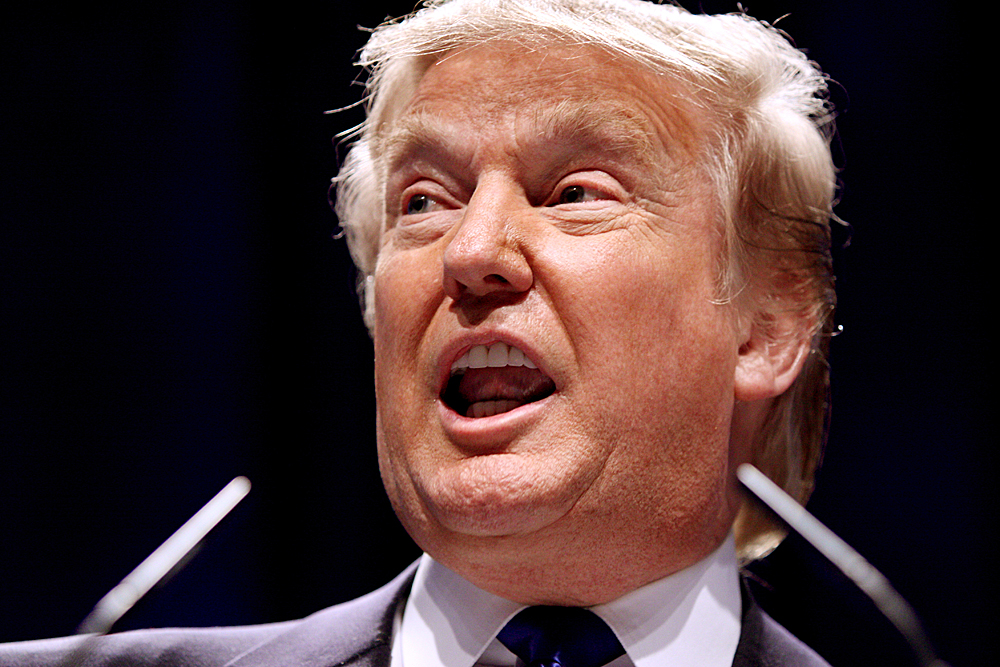Trump’s 90-Day Tariff Reprieve: Relief or Financial Time Bomb?
President Donald Trump is suspending reciprocal tariffs while increasing tariffs on Chinese products. Here’s what this means for your finances.
President Donald Trump is urging everyone to stay calm. The ongoing rollercoaster of tariff disputes is causing anxiety nationwide, as Americans anxiously monitor the fluctuations in their stock portfolios and 401(k) accounts, which are subject to the unpredictable movements of the financial markets.
Economists indicate that consumers have valid concerns. At midnight Eastern time on Wednesday, the White House enacted double-digit tariffs on numerous countries. However, just hours later, President Trump changed his stance, reducing tariffs on goods from various nations to 10% for a period of 90 days. This temporary relief from global tariffs led to a remarkable rally on Wall Street, yet uncertainty continues to loom on Main Street.
“Even with the pause, tariffs are effectively higher because of the spike on Chinese goods — the effective tariff rate now tops 30.5%,” said Diane Swonk, chief economist at KPMG. “That will absolutely show up in prices, especially for lower-income consumers who buy more Chinese-made goods.”
The changes also escalated the trade war with China.
On Wednesday, Trump raised tariffs on Chinese imports to 125%, attributing this decision to "the lack of respect China has demonstrated towards the global markets." In response, China has implemented tariffs of 84% on all American products. Additionally, Trump announced plans to proceed with further tariffs on pharmaceutical drugs and foreign steel.
So what do the latest developments mean for your wallet?
‘Yippy’: Why did Trump pause tariffs?
Trump, along with his senior economic advisors, announced a suspension of the tariffs following negotiations initiated by over 75 countries with the United States. He also indicated to reporters that the volatility in the markets contributed to this decision.
"I thought that people were jumping a little bit out of line," Trump said. “They were getting yippy, you know. They were getting a little bit yippy, a little bit afraid."
But trade deals will not happen right away, Commerce Secretary Howard Lutnick told Fox News. “The real deals will take some time,” Lutnick said Wednesday.
What does the tariff pause mean for you?
In the meantime, American consumers should brace for “more bad days in the stock market” and a “massive” increase in prices, not to mention the possibility of a recession, said Mark Zandi, chief economist for financial services company Moody's Analytics.
“I wouldn’t take any solace in the president’s reversal of the reciprocal tariffs,” Zandi told USA TODAY. “With the higher 125% tariff on Chinese goods, the effective tariff across all countries and goods didn’t change appreciably. It is still above 20% and will result in big price increases for everything from clothing to cars to cell phones.”
Who pays for tariffs?
A tariff is a type of tax levied on products brought into a country from abroad. While Trump has claimed that foreign nations bear the financial burden, it is actually the importers—typically U.S. businesses—that are responsible for these taxes. Companies usually transfer a portion of these increased expenses to consumers, leading economists to argue that tariffs can contribute to inflation. Revenue generated from tariffs is directed to the Treasury Department. Economists indicate that a significant portion of the tariff costs during Trump's initial term was ultimately absorbed by consumers.
Why does Trump want tariffs?
Trump has expressed his belief that tariffs serve as a mechanism to enhance manufacturing within the United States and generate "billions, even trillions of dollars" in revenue, even suggesting the possibility of substituting income tax with tariffs. "We're going to start becoming very wealthy again," he stated last week. Additionally, Trump has indicated that tariffs can function as a strategy for negotiations with other nations or as a means to penalize those he perceives as uncooperative.
How much money could tariffs bring in?
Prior to the announcement of the 90-day pause, Peter Navarro, who served as Trump’s senior advisor on trade and manufacturing, projected that tariffs would generate approximately $6 trillion over the next decade. In contrast, more conservative estimates from the Yale Budget Lab suggested that tariffs in 2025 might yield around $3 trillion from 2026 to 2035. However, some economists caution that tariffs may not be a dependable source of revenue. Should the trade war lead to increased prices for goods, consumers might reduce their spending, which constitutes roughly 70% of the economy. Consequently, companies may decrease their imports, resulting in diminished tariff revenue for the government. Additionally, employing tariffs as a negotiation strategy could further limit potential revenue if the U.S. opts to reduce tariffs on its trading partners.
Which tariffs are still in effect?
After the announcement of the 90-day pause, tariffs currently in place include:
- A universal 10% tariff against all trading partners outside of Canada and Mexico.
- A 25% tariff on steel and aluminum.
- A 25% tariff on imported vehicles and certain auto parts.
- Canada tariffs: 25% on most goods that don't comply with the United States-Mexico-Canada Agreement.
- Mexico tariffs: 25% on most goods that don't comply with the United States-Mexico-Canada Agreement.
The European Union, China and Canada have announced retaliatory tariffs against the U.S.
How much would a trade war with China cost you?
A trade conflict between the U.S. and China could significantly impact American consumers, leading to increased prices for a wide range of products, including groceries, automobiles, and iPhones, following a period of severe inflation. China serves as the primary supplier for the United States, providing 16.5% of the $3.2 trillion in imports recorded in 2022, as reported by the Office of the U.S. Trade Representative.
This includes a variety of items, from smartphones and computers to toys and holiday decorations. Anna Wong, chief economist at Bloomberg LP, expressed on the X social media platform that the current tariff situation is particularly detrimental. She noted that China exports a larger volume of consumer goods to the U.S. compared to other nations, and increasing tariffs on these goods to 125% relative to others would significantly impact consumption.
On Wednesday, former President Trump stated that he did not anticipate needing to raise tariffs further, suggesting that Chinese President Xi Jinping is interested in reaching an agreement. "I can’t imagine it," he remarked in the Oval Office. "I don’t think I’ll have to do it." As of now, Beijing has not reacted to the recent increase in tariffs, and analysts believe it is unlikely that the Chinese government will concede. Evan Medeiros, a former senior national security official during the Obama administration and currently a professor at Georgetown University, informed The Wall Street Journal that Beijing has developed "a new arsenal of tools designed to reduce costs for China while increasing the burden on the U.S." On Tuesday, China's commerce ministry characterized the proposal to raise tariffs as "a mistake on top of a mistake," asserting that "China will never accept it."
How is the stock market reacting to tariffs?
The U.S. stock market experienced significant fluctuations following Trump's tariff announcement on April 2, as investors expressed worries that these tariffs might lead the country into a recession. Earlier this week, the S&P 500 briefly fell to a level indicative of a bear market, defined as a decline of at least 20% from its most recent high, before recovering. On Wednesday, stocks surged after Trump declared a 90-day suspension of the tariffs.
How would tariffs affect prices?
Tariffs might seem like one of those things that only matter in Washington, but they have a way of creeping into everyday life. When the government puts higher taxes on stuff we import—especially from big trading partners like China—it makes those products more expensive for businesses to bring in.
And let’s be real: most companies aren’t just going to eat that cost. They pass it on to us. So that phone you’ve been eyeing, those back-to-school clothes, even basic things like kitchen supplies—they all get a little pricier. Even American-made goods can feel the impact since a lot of them rely on parts from overseas. It’s a slow squeeze, but for people already watching every dollar, it’s one more thing making life just a bit harder.










